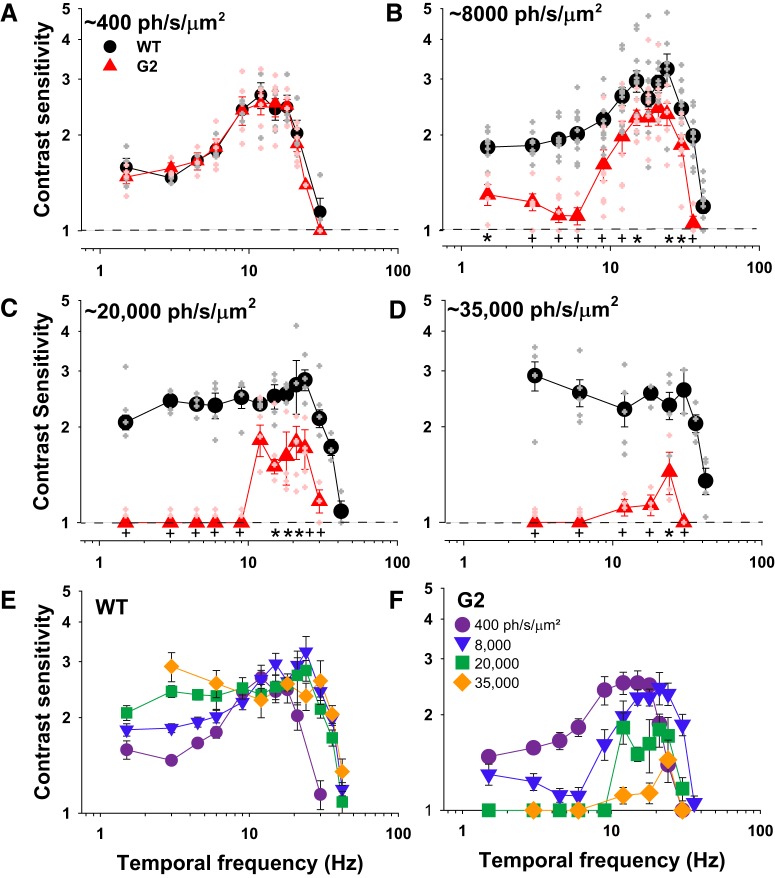Figure 4.
Rods are sufficient to mediate TCS to high but not low temporal frequencies in bright mesopic light levels. A–D, TCSFs of WT (black circles) and G2 mice (red triangles) measured at mean retinal irradiance values of: (A) 400 ph/s/μm2, WT (n = 4), and G2 mice (n = 3–6); (B) 8000 ph/s/μm2, WT (n = 4–9), and G2 mice (n = 4–8); (C) 20,000 ph/s/μm2, WT (n = 4), and G2 mice (n = 4–5); and (D) 35,000 ph/s/μm2, WT (n = 3–5), and G2 mice (n = 3). Mice were 3–6 months old. Closed symbols represent mean ± SEM, whereas the smaller, lighter symbols are responses of individual mice (WT, gray; G2, light red). Statistical analysis: two-way ANOVA (see text for details), frequency × genotype interactions: *p < 0.05 and +p < 0.01, all other interactions p > 0.05. E, F, TCSFs over increasing background intensities for (E) WT and (F) G2 mice. Retinal irradiance values of WT and G2 mice were estimated using the pupil area values of freely behaving mice as described in Materials and Methods.

